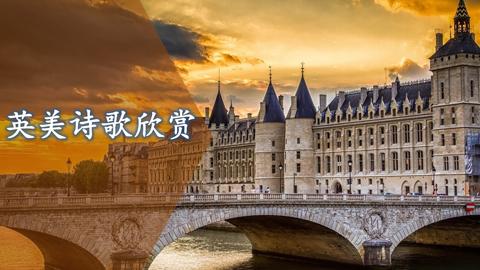I wander thro’ each charter’d street,
Near where the charter’d Thames does flow.
And mark in every face I meet
Marks of weakness, marks of woe.
In the first stanza, the speaker provides setting and tone. The setting can of course be derived from the title, but the first stanza also reveals that the speaker is walking down a street. He says that he “wander[s] down each chartered street”. The term “wander” gives some insight into the speaker as well. He appears to be not quite sure of himself, and a bit misguided, if not entirely lost. The use of the term “chartered” also suggests that the streets he walks are controlled and rigid. He is not walking in a free, open field, but a confined, rigid, mapped out area. The speaker will expound upon this idea later on in the poem. As he walks, he notices something about the faces of the people walking by. There seems to be the marks of weariness in them all. He describes their faces as having “weakness” and “woe”. This sets up the tone as melancholy. The gloom and the sadness seem to seep from the speaker’s voice as he describes the passersby.
In every cry of every Man,
In every Infants cry of fear,
In every voice: in every ban,
The mind-forg’d manacles I hear
While the first stanza sets up the tone of the poem, the second stanza gives some insight into the speaker’s melancholy feelings toward the people he watches pass him by. The speaker reveals that from the cry of the newborn infant, to the cry of the full grown man, he hears the “mind forg’d manacles”. This gives insight into his despairing view of mankind. The “manacles” are shackles or some kind of chain that keeps a person imprisoned. The fact that these chains are “mind forg’d” reveals that they are metaphorical chains created by the people’s own ideas. The use of the word “ban” reveals that these manacles are placed there by society. A ban, of course, is a restriction given by law. The speaker’s use of words such as “Charterd” “ban” and “manacles” reveal his belief that society metaphorically imprisons people. Suddenly, it becomes apparent that the thoughts, pressures, and ideals of society are under scrutiny here.
How the Chimney-sweepers cry
Every blackning Church appalls,
And the hapless Soldiers sigh
Runs in blood down Palace walls
In this stanza, the speaker digs even deeper into the reasons for his feelings toward humanity. He implies that the shackles worn by the people and inflicted by society have some disastrous results. He begins with the Chimney sweeper. The Chimney sweeper was one of the poorest of society. His life expectancy was threatened because of his line of work. He was consistently dirty and sick. Those of the lowest class were forced into this kind of work in order to provide for their families. Then, the speaker criticizes the church, calling it “blackening” and claiming that even the church “appalls” at the the Chimney sweeper. Often, the chimney sweepers were just children. They were small enough to fit down the chimneys. These children were often orphaned children, and the church was responsible for them. This explains why the poet ties the chimney sweepers with the “blackening church”. The speaker then turns his attentions to the “hapless soldier”. He has already criticized society, pointed out the misfortunes of the poor and the hypocrisy of the church, and now he will also criticise the government by suggesting that the soldiers are the poor victims of a corrupt government. He reveals his feelings toward war by describing the blood that runs down the palace walls. The palace, of course, is where royalty would have lived. Thus, the speaker accuses the higher up people in his society of spilling the blood of the soldiers in order to keep their comfort of living in a palace.
But most thro’ midnight streets I hear
How the youthful Harlots curse
Blasts the new-born Infants tear
And blights with plagues the Marriage hearse
In the final stanza, the speaker reveals how the corruptness of society attacks innocence. He says that he hears the “youthful Harlot’s curse…”. The idea of a youthful harlot suggests the level of poverty and corruption, that a girl who was yet a youth would be involved in prostitution. Then, things become even more interesting, as the speaker reveals the object of the Harlot’s cursing. She curses at the tears of a newborn baby. This is the ultimate attack upon innocence. The speaker does not reveal whether the harlot is the mother of the baby or not, but he does imply that rather than comforting a crying infant, she curses it. This reveals the hardened heart of the harlot, which represents the hardened heart of society at large. While the innocent shed tears, the perverted attack them. The last line of this poem reveals the speaker’s thoughts on marriage as well. The Harlot, apparently, has “blighted” the “marriage hearse”. She has deranged marriage by having sold her body before ever entering into the marriage union. Although the speaker believes that the Harlot has somehow damaged marriage, he also reveals his beliefs about marriage in the first place. The fact that he calls it a “marriage hearse” reveals that he views marriage as death. Overall, the poem has criticized society, the church, prostitution, and even marriage. The innocent baby shedding tears represents those who are innocent in the world. They are few and they are scoffed at. They are also infants, and are not left to be innocent for long. Their innocence is “blasted” by the cry of the perverted.
0 回复
- 还没有回复,赶快添加一个吧!
添加回复
 您确定给 “0” 位老师发送协议吗?
您确定给 “0” 位老师发送协议吗?





